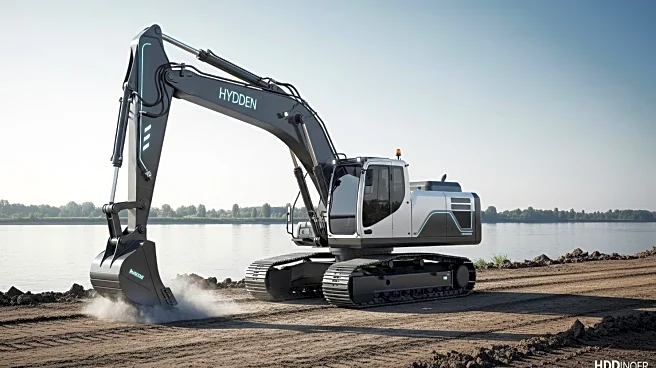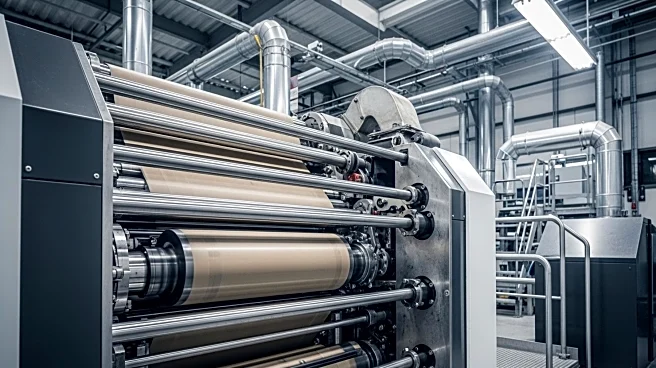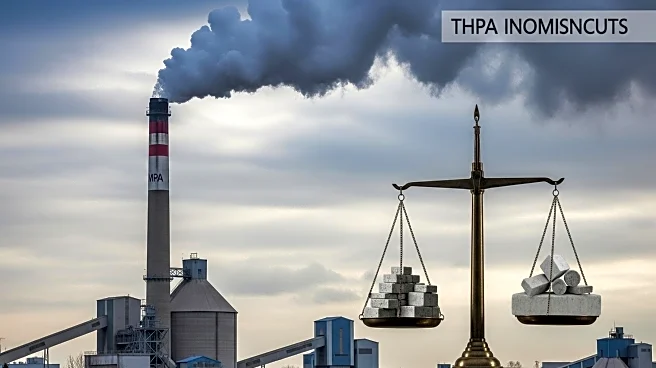What's Happening?
Skanska has successfully deployed a hydrogen-powered digger on the Lower Thames Crossing project, marking a global first for live deployment of such technology in construction. The 20-tonne JCB machine, operating near Gravesend in Kent, is part of efforts to ensure the road tunnel project achieves carbon neutrality. The digger, which runs on hydrogen instead of diesel, has already saved over one tonne of CO2 emissions in its initial weeks of operation. This initiative is part of a broader strategy to eliminate diesel from worksites by 2027 and to use the lowest-carbon materials available.
Why It's Important?
The use of hydrogen-powered machinery in construction represents a significant step towards reducing carbon emissions in the industry. As the first major UK infrastructure project to aim for carbon neutrality, the Lower Thames Crossing sets a precedent for future projects. The deployment of hydrogen technology not only supports environmental goals but also demonstrates the viability of alternative fuels in heavy machinery. This could lead to increased adoption of hydrogen solutions in construction, contributing to the UK's broader net-zero targets and promoting innovation in sustainable infrastructure development.
What's Next?
The success of the hydrogen digger could encourage further investment in hydrogen technology for construction and other industries. The project team plans to award a large green hydrogen supply contract, which could stimulate growth in the hydrogen supply chain. Additionally, the initiative may influence policy and funding decisions related to sustainable construction practices. As the project progresses, stakeholders will likely monitor its impact on emissions and its potential to serve as a model for future infrastructure projects.










